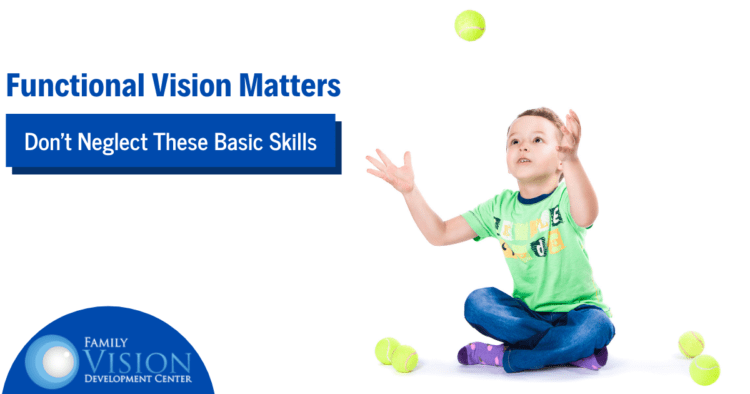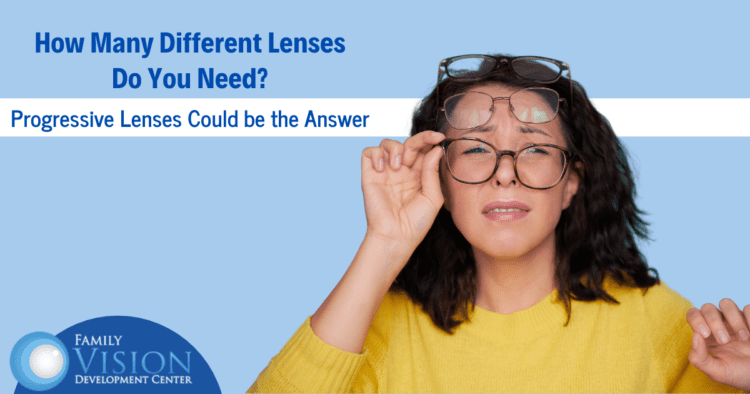

Functional Vision: 4 Basic Visual Skills Kids NEED for Life Success
Kids rely on their visual skills all year round in everything they do. But it’s not simply 20/20 vision that is needed. Functional vision refers to the entire visual system, including the eyes, brain and visual pathways between them, working together to help them interact with the world around them. Whether it is the beginning of the school year or the middle of summer break, proper functional vision can help ensure your child does well while reading, writing, playing sports or basically any daily activity. A problem with any of the following 4 components of functional vision should be treated as quickly as possible.
Functional Vision Skills
Tracking – the ability to move your eyes accurately and smoothly from place to place or across a page. A problem with eye tracking can affect reading fluency and comprehension, handwriting, hand-eye coordination and sports performance.
Focusing – the ability to easily switch focus between near and far objects. Difficulty with focus can cause eye strain, blurred vision, headache and fatigue, as well as frustration in the classroom when switching between desk work and a white board.
Visual Processing Skills – the way the brain interprets and makes sense of what the eyes see in the world around us. This can mean recognizing the difference between two similar letters, or even understanding that a ball coming at your face should be caught. Visual processing skills have a big impact on a child’s ability to learn, as well as their self-esteem.
Eye Teaming – both eyes working together as a team, in a coordinated and precise manner, to make a single image. Symptoms of eye teaming problems include poor depth perception, double vision, headaches and reading problems.
Vision Therapy for Functional Vision Problems
The best way to determine the efficiency of your child’s visual skills is through a functional vision assessment. This comprehensive exam can allow us to evaluate and diagnose any functional vision problems, and in turn, we can develop a custom vision therapy program to target the specific issues your child is dealing with. Vision therapy is an extremely effective form of treatment for all areas of functional vision disorders. And the doctors at Family Vision Development Center have advanced training in the latest vision therapy techniques, in order to provide the best possible outcomes for your child.
Contact our office at 630-862-2020 or visit us online to learn more about our vision therapy programs or to schedule your appointment.

